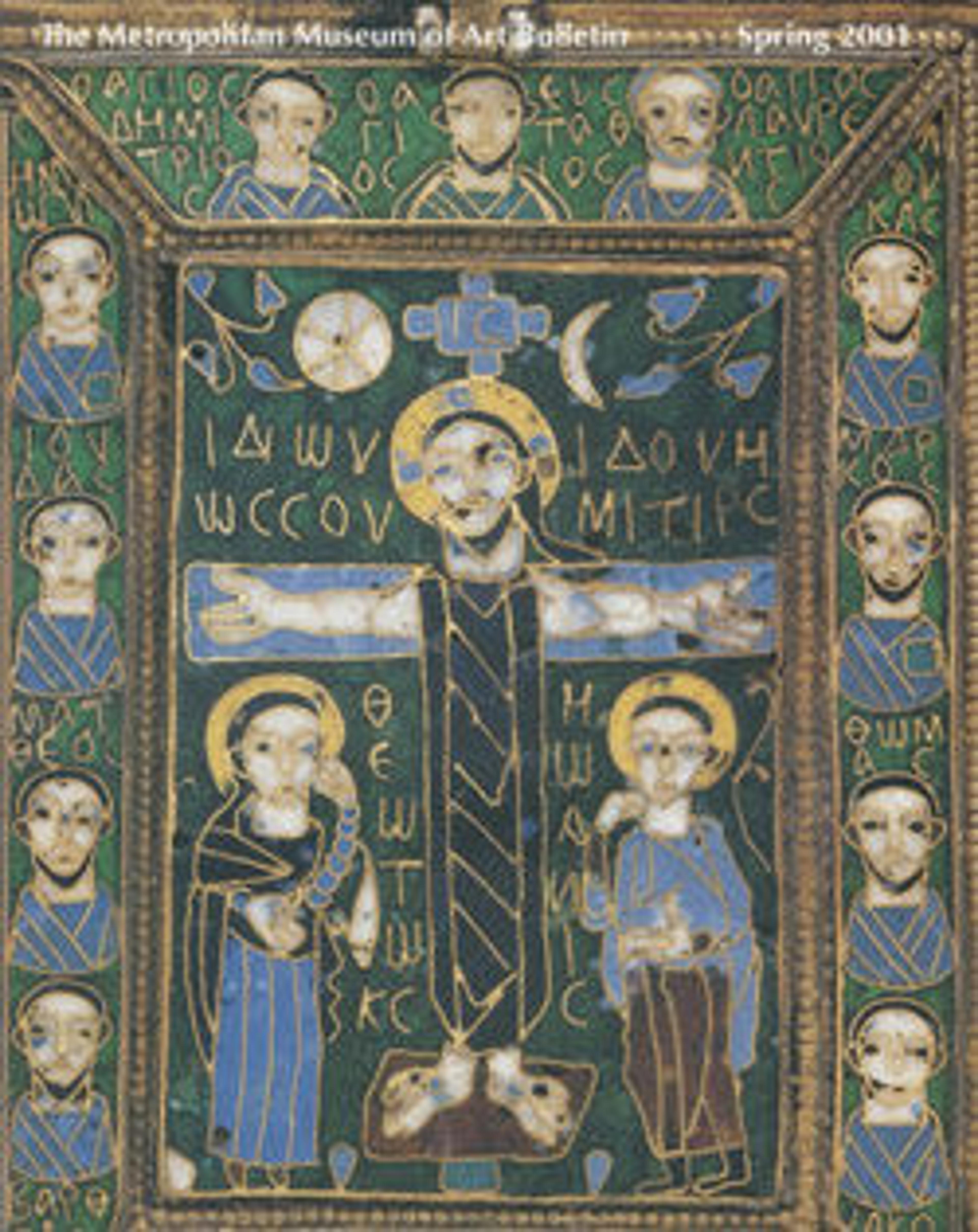Gold Buckle with Garnets
This buckle, dating from the first half of the fifth century, was discovered in Raab, Hungary. As it was found with silver-gilt and garnet sheath fittings from a battle dagger and sword (now in the British Museum), it may have come from the grave of a prominent leader. The fine workmanship and a rich combination of heavy gold and dark garnets argue that it may have been made in a central jeweler's workshop in Constantinople. Often tribal chieftains from outlying regions of Byzantium were given opulent pieces of jewelry or sword fittings by the emperor, as a sign of friendship and alliance (or as a small bribe). Kings and powerful men would also commission pieces privately from these workshops, as a tangible symbol of their wealth and connections to the powerful civilization in Constantinople, so it is entirely probable that this buckle traveled very far from its maker before being buried with its owner.
Artwork Details
- Title: Gold Buckle with Garnets
- Date: 400–500
- Geography: Made in Constantinople (probably)
- Culture: Germanic
- Medium: Gold, garnets with patterned foil backing, cloisonné garnets
- Dimensions: Overall: 1 5/16 x 1 1/8 x 1/2 in. (3.4 x 2.9 x 1.2 cm)
- Classification: Metalwork-Gold
- Credit Line: Purchase, Rogers Fund, Alastair B. Martin, Norbert Schimmel Foundation Inc., and Levy Hermanos Foundation Inc. Gifts, and funds from various donors, 1986
- Object Number: 1986.341
- Curatorial Department: Medieval Art and The Cloisters
More Artwork
Research Resources
The Met provides unparalleled resources for research and welcomes an international community of students and scholars. The Met's Open Access API is where creators and researchers can connect to the The Met collection. Open Access data and public domain images are available for unrestricted commercial and noncommercial use without permission or fee.
To request images under copyright and other restrictions, please use this Image Request form.
Feedback
We continue to research and examine historical and cultural context for objects in The Met collection. If you have comments or questions about this object record, please contact us using the form below. The Museum looks forward to receiving your comments.
